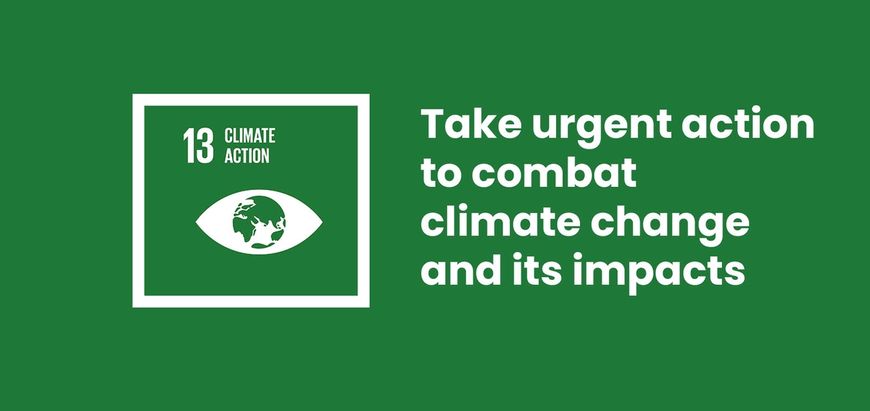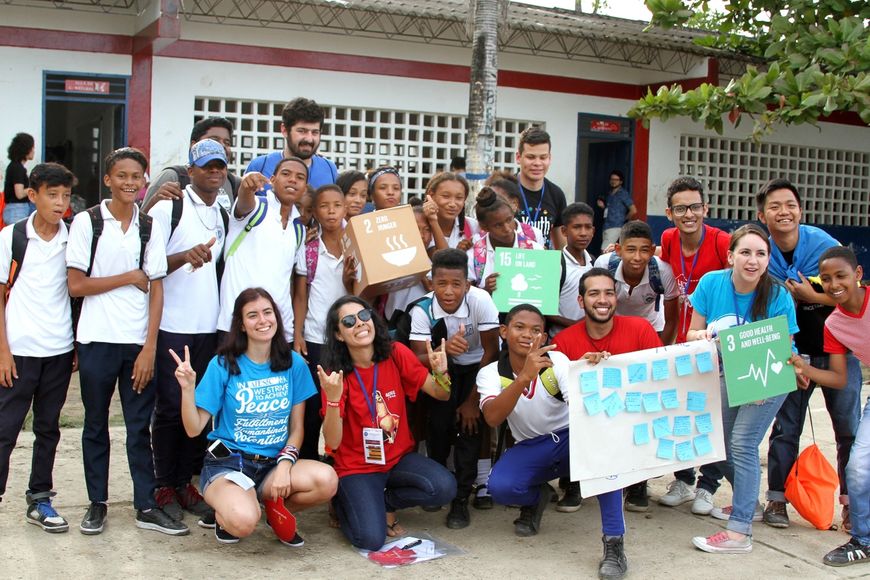Introduction to Goal 13 - Climate Action
Use this guide to introduce Global Goal 13, Climate Action to your students.

What is Global Goal 13?
Sustainable Development Goal 13: Climate Action is one of the 17 Sustainable Development Goals established by the United Nations in 2015. You can find out more about the Goals in our guide.
Goal 13 covers a wide range of issues, including limiting the pollution that is causing climate change and strengthening our ability to resist the effects of climate change, like storms and flooding in some areas and droughts in others.
What is climate change?
Climate change includes both the global warming driven by human emissions of greenhouse gases, and the resulting shifts in weather patterns. Although the climate has changed at other times in the Earth’s history, this is the first time humans have caused it to change.
According to the United Nations, “Climate change is affecting every country on every continent. It is disrupting national economies and affecting lives. Weather patterns are changing, sea levels are rising, and weather events are becoming more extreme.”
Although climate change is a global problem, people can take action in their own lives to prevent it. For example, you can cycle or walk instead of driving, buy food that is grown locally instead of abroad and use solar energy. All of these things help reduce the pollution that causes climate change.
Activities
Below are some ideas to help bring Goal 13 to life for your students. They work as standalone activities or in sequence as a full lesson plan.
Activity 1: Young climate activists
In this activity students will learn about activists and the impact they can have.
Length - 15 mins
Discuss the following question with your students “What do you care about?” You may want to first to share examples; e.g your students, your school, your family etc.
Next share the word Activist with students. Do they know what this means? Explain that an Activist is someone who cares about specific issues and campaigns to highlight the issue or make more people aware of it. Can students think of activists/campaigns that they know?
Then play students the following video.
- What is the message from the climate activists?
- What do you think about that message?
- What could you do in your community?
Activity 2: How Earth is changing?
In this activity students will explore how the Earth is changing using Google Earth time-lapse.
Length - 15 mins
1. Opening discussion
1. Opening discussion
2. Google Earth Engine - look at changes to earth
2. Google Earth Engine - look at changes to earth

Activity 3: How has the place I live changed?
In this activity students will explore how the place they live is changing using Google Earth time-lapse.
Length - 15 mins
Use Google Earth Engine time-lapse to understand how your local area has changed from 1984 until 2018.
Type the name of your nearest city into the search bar. If time-lapse isn’t available for your nearest city, type in the capital city of your country.
Watch the time-lapse to see how the city has changed. Students can use this as a guide to answer the following questions:
- What can you see? How has the city changed?
- Is there more or less green space in your city?
- Are there more houses?
- Are there more roads and traffic?
- Why might these changes have happened?
- Do you see any benefits to the way your city has changed?
- Do you see any problems occurring if your city continues to change in this way?
- Has your home city taken any preventions to tackle climate change, that you can see? Eg, cycle lanes to reduce car pollution, recycling bins, outdoor parks

The activities are created by World's Largest Lesson